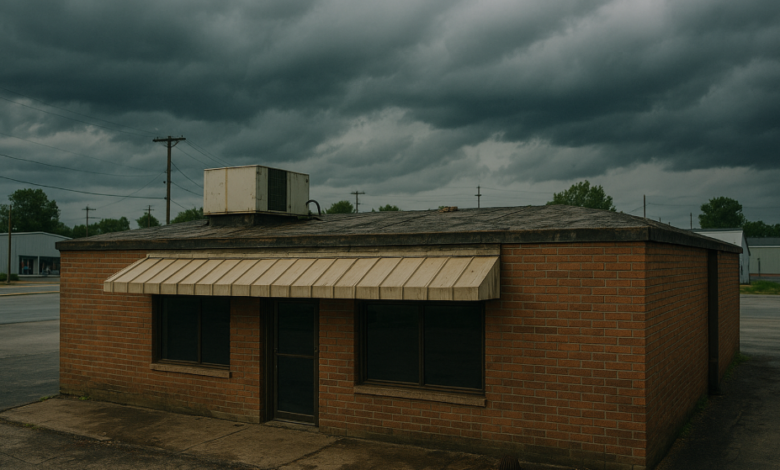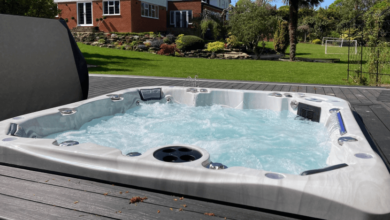The Hidden Cost of Skipping Roof Inspections for Small Businesses

For small business owners, every dollar counts. Whether you’re running a local retail store, a warehouse, or a small office building, staying on top of operational expenses and building upkeep is essential to your bottom line. Yet, one area that is frequently overlooked—until it’s too late—is the condition of the roof.
Skipping regular roof inspections might seem like a harmless cost-saving measure, especially when nothing appears wrong at first glance. But beneath the surface, small issues can quietly escalate into expensive problems that disrupt operations, damage assets, and drain your budget.
In this post, we’ll explore the true financial and operational costs of neglecting roof inspections, why it’s a critical investment for small businesses, and what steps you can take to avoid unnecessary risk.
Why Roof Inspections Matter More Than You Think
Commercial roofs, especially those on flat or low-slope buildings, are exposed to constant wear from weather, temperature changes, and environmental factors. Unlike obvious issues like a flickering light or a cracked window, roof problems often go undetected until significant damage occurs.
Water leaks, insulation breakdown, and drainage failures may not be visible from the ground—but they’re happening. A simple inspection can catch these issues early, long before they lead to structural repairs or costly business interruptions.
See also: How UAE Residents Are Upgrading Their Home Care Habits?
The Myth of “Out of Sight, Out of Mind”
Many small business owners assume that if there’s no leak, there’s no problem. Unfortunately, water intrusion and roof membrane deterioration can happen slowly and silently over time. By the time a stain appears on your ceiling, the damage may have already spread behind walls, compromised insulation, or impacted your HVAC system.
Routine inspections act as a preventive shield against these hidden risks. For instance, scheduling a tulsa roof inspection can help identify minor cracks, drainage clogs, or membrane separations before they threaten your building’s integrity.
Unexpected Financial Fallout of Deferred Maintenance
Let’s break down the real-world costs of skipping inspections:
1. Emergency Repair Costs
Emergency roof repairs tend to be significantly more expensive than planned maintenance. Contractors may charge premium rates for urgent fixes, especially during peak weather seasons when roofing services are in high demand.
2. Interior Damage
A leaking roof doesn’t just stop at the ceiling. Water can damage drywall, flooring, electrical systems, office equipment, and even inventory. In some cases, you may need to shut down operations for cleanup and restoration.
3. Business Interruption
Time is money. Water damage or roofing failures can cause downtime, impacting your ability to serve customers or fulfill orders. Some insurance policies might not fully cover loss of income caused by preventable maintenance failures.
Insurance Implications: Coverage Isn’t Always Guaranteed
Business owners often assume their insurance will cover any roof-related damage, but the reality is more complex. Many commercial property policies contain clauses requiring proof of routine maintenance.
If damage occurs due to long-term neglect, your claim may be partially denied or rejected altogether. Having documentation from a professional tulsa roof inspection not only protects your physical assets—it reinforces your position during insurance disputes.
Energy Efficiency Losses Add Up Over Time
A poorly maintained roof can drastically reduce your building’s energy efficiency. Damaged insulation, leaks, or gaps in the roofing membrane allow outside air to infiltrate your space, forcing your HVAC system to work harder.
This not only results in higher utility bills but also shortens the lifespan of your heating and cooling equipment. A neglected roof doesn’t just cost you in repairs—it raises your operating costs every month.
Structural Risk and Liability Exposure
Beyond financial loss, structural damage poses safety hazards for employees, customers, and tenants. If ceiling tiles fall, mold develops, or electrical components are exposed to water, the risk of injury—and subsequent liability—rises significantly.
Regular inspections can catch these threats early, helping you maintain a safe environment and stay compliant with building codes. Engaging a qualified professional for a tulsa roof inspection ensures that all structural elements are reviewed with precision and accountability.
Long-Term Roof Lifespan: Pay Now or Pay Later
Every roof has a finite life expectancy, but how long it lasts depends greatly on how it’s maintained. Skipping inspections reduces the chance to detect wear patterns, address weak spots, and extend the roof’s useful life through timely repairs.
In contrast, businesses that invest in inspections and minor fixes are often able to defer full roof replacement by several years—saving tens of thousands of dollars in capital expenses. Think of inspections not as a cost, but as a strategy to protect your long-term investment.
Mold and Indoor Air Quality Concerns
When leaks go unnoticed, moisture can seep into insulation and interior walls, creating an ideal environment for mold. This isn’t just an aesthetic problem—it’s a serious health concern that can affect employee well-being and trigger costly remediation efforts.
Poor indoor air quality can also damage your business reputation, especially if you operate a customer-facing facility. Booking a tulsa roof inspection can help spot early signs of water damage that may otherwise remain hidden behind drywall or ceiling tiles.
Missed Opportunities for Upgrades and Incentives
Regular inspections can also identify opportunities to improve your building’s performance. For example, a worn-out section of roof might be eligible for an energy-efficient upgrade, tax incentive, or state rebate—options that would go unnoticed without a professional assessment.
These small upgrades can have a big impact on your building’s efficiency, comfort, and value. An inspection is often the first step toward qualifying for sustainability incentives or improving your business’s environmental footprint.
Peace of Mind and Professional Credibility
Finally, inspections offer one thing every small business owner needs: peace of mind. Knowing your building is protected from preventable damage allows you to focus on growth, customer service, and operations—not sudden facility crises.
Clients, partners, and investors also appreciate when a business takes proactive steps to maintain its property. A clean maintenance record, supported by a detailed tulsa roof inspection, shows that your business is committed to professionalism and long-term reliability.
Conclusion: Small Steps That Prevent Big Problems
For small businesses, roof inspections may seem like an optional line item in an already tight budget. But the real cost lies in ignoring them. From hidden water damage to denied insurance claims, the risks of skipping inspections far outweigh the modest investment required to schedule one.
Taking a proactive approach protects your property, safeguards your operations, and ultimately strengthens your bottom line. In business, the smartest investments are the ones that prevent loss—and a roof inspection is one of the simplest, most effective steps you can take.




